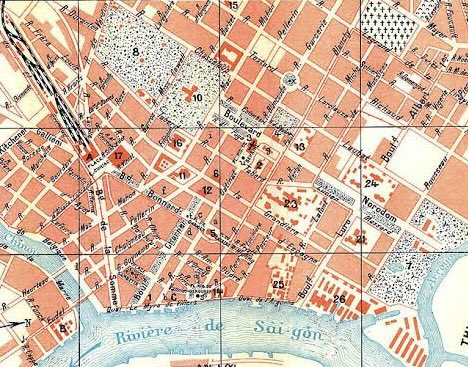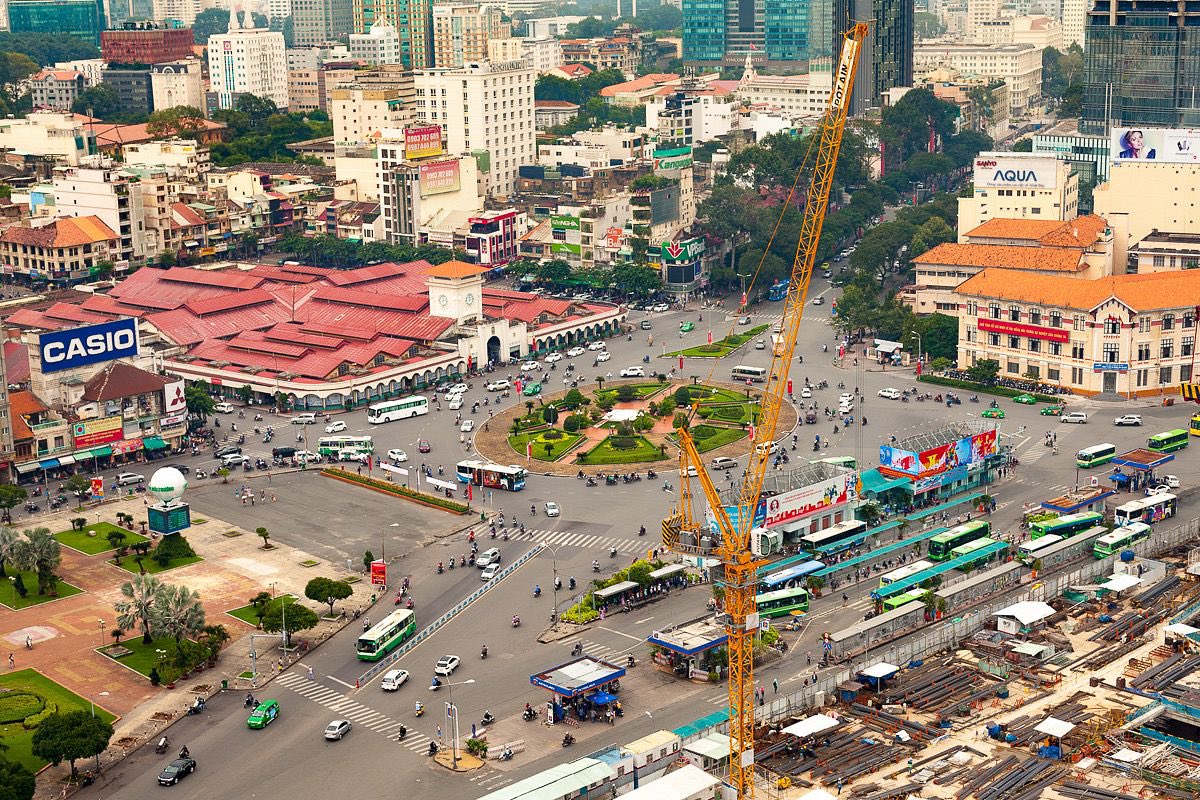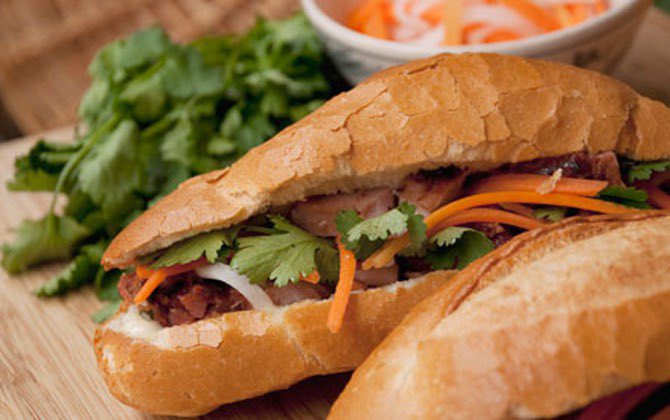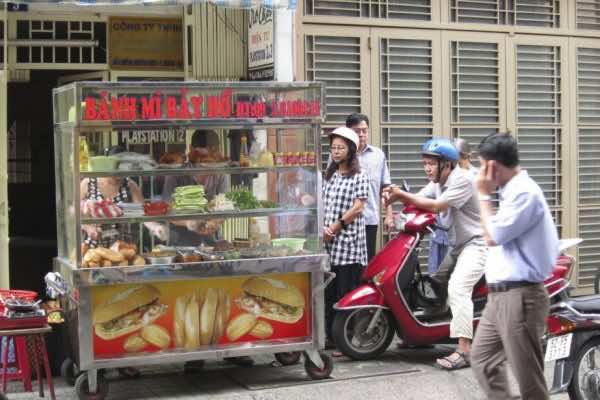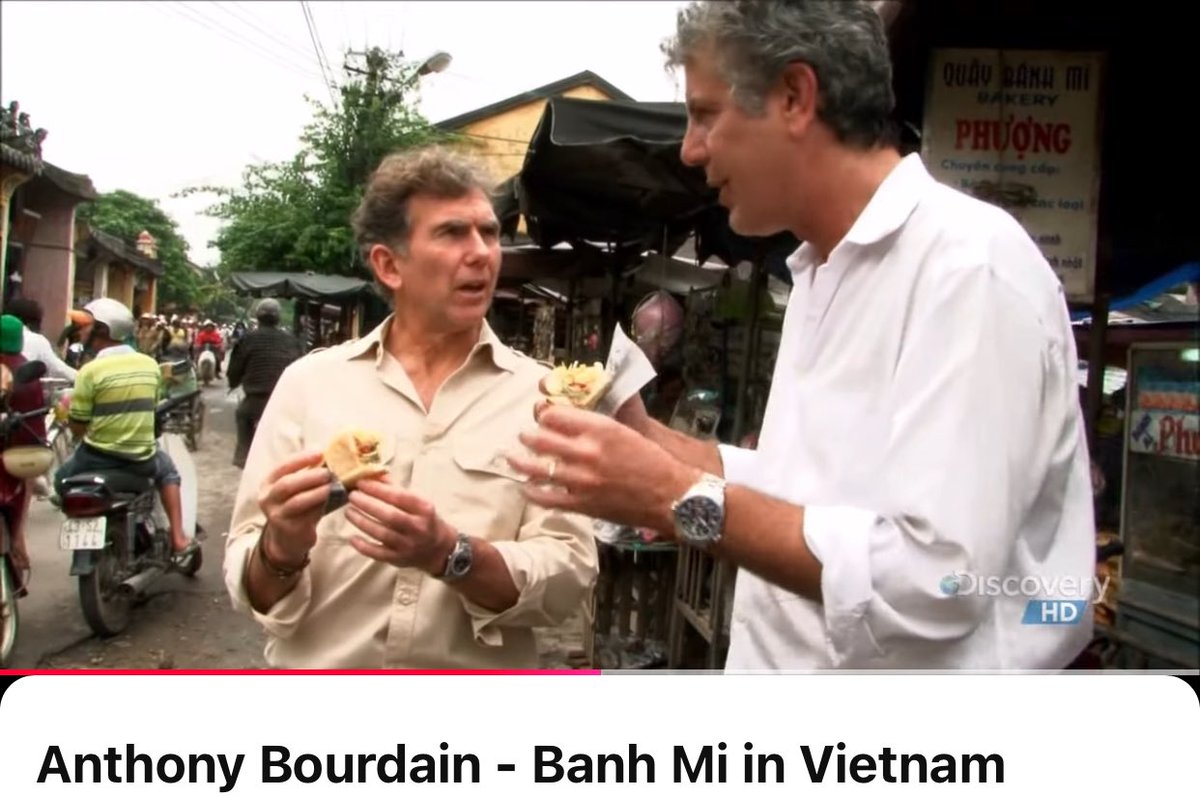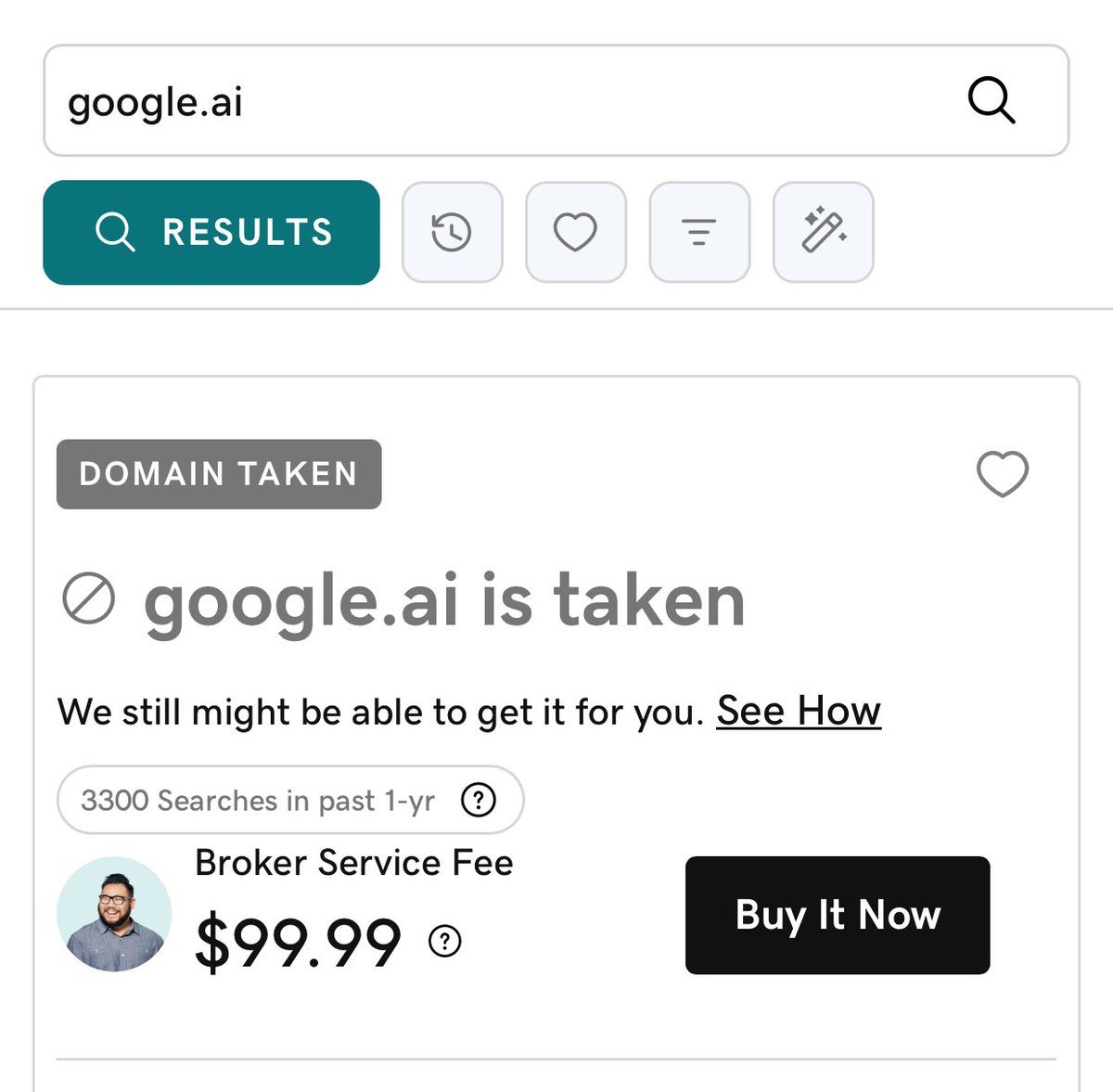Costco is the world's 3rd largest retailer by sales, notching $190B+ annually (behind Amazon, Walmart).
The company is all about "value" and uses psychological hacks in its business model and store design to get shoppers to spend dough.
Here are 14 of them 🧵
The company is all about "value" and uses psychological hacks in its business model and store design to get shoppers to spend dough.
Here are 14 of them 🧵

1/ At Costco, the membership is the core asset. Customers pay $60-120 per year for the right to buy comically large cans of tuna (AKA incredible value).
In its last reporting year, membership fees were 2% of revenue ($4B of $195B), but accounted for 70%+ of Costco's $5B profits.
In its last reporting year, membership fees were 2% of revenue ($4B of $195B), but accounted for 70%+ of Costco's $5B profits.

2/ Membership psychology 1
In the early 2000s, Costco CEO Jim Sinegal told Jeff Bezos (who would roll out Prime) that "the membership fee is a one-time pain".
But the value of the concept is "reinforced every time customers sees 47" TVs that are $200 less than anyplace else."
In the early 2000s, Costco CEO Jim Sinegal told Jeff Bezos (who would roll out Prime) that "the membership fee is a one-time pain".
But the value of the concept is "reinforced every time customers sees 47" TVs that are $200 less than anyplace else."
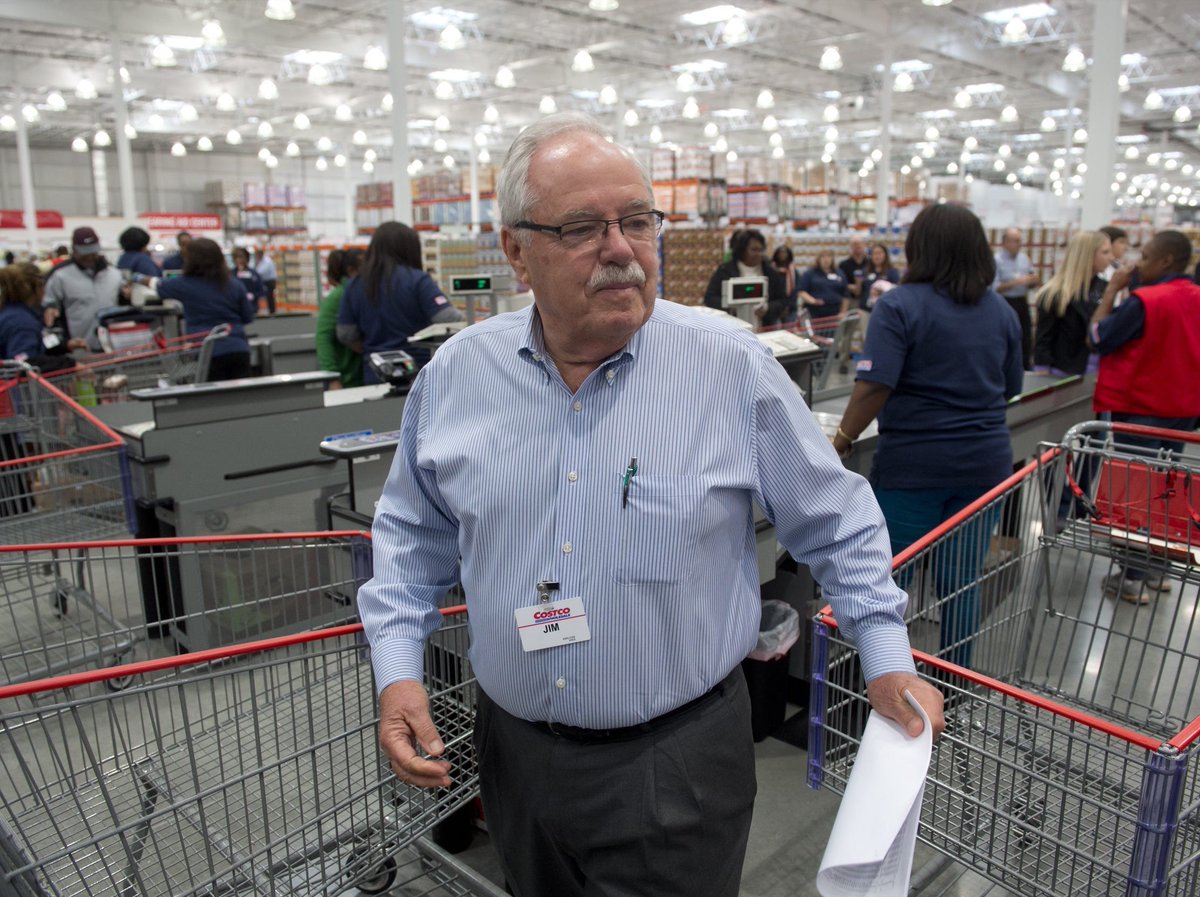
3/ Membership psychology 2
Costco's 110m+ members are hit by the "Sunk Cost Fallacy": people will spend more time and money on something if they've already made an investment (to "get their money's worth").
With a 90% renewal rate, members are clearly OK with the deal.
Costco's 110m+ members are hit by the "Sunk Cost Fallacy": people will spend more time and money on something if they've already made an investment (to "get their money's worth").
With a 90% renewal rate, members are clearly OK with the deal.

4/ The 1st thing you see...
...entering a Costco are affordable electronics like laptops, phones and TVs (Sinegal wasn't joking).
Why? Marked-down TVs are a more salient reminder of value than marked-down food. Also, other prices in the store looks cheap vs. big-ticket items.
...entering a Costco are affordable electronics like laptops, phones and TVs (Sinegal wasn't joking).
Why? Marked-down TVs are a more salient reminder of value than marked-down food. Also, other prices in the store looks cheap vs. big-ticket items.

5/ Barebones appearance
Costco has 800+ warehouses (~70% in US). They all have minimalist interiors that screams "value":
◻️ exposed beams
◻️ concrete flooring
◻️ Used cardboard boxes as "checkout bags"
It feels like a wholesale venue filled w/ "deals" vs. standard retail.

Costco has 800+ warehouses (~70% in US). They all have minimalist interiors that screams "value":
◻️ exposed beams
◻️ concrete flooring
◻️ Used cardboard boxes as "checkout bags"
It feels like a wholesale venue filled w/ "deals" vs. standard retail.


6/ Boxes stacked to the ceiling
In retail, there's a concept known as "stack 'em high, watch 'em fly".
The psychology is that when a product is stacked to the sky, shoppers will believe that retailers desperately want to unload the inventory, so it's perceived as a deal.

In retail, there's a concept known as "stack 'em high, watch 'em fly".
The psychology is that when a product is stacked to the sky, shoppers will believe that retailers desperately want to unload the inventory, so it's perceived as a deal.


7/ The deals *are* great
Costco aims for "pricing authority", which means consistently providing the most competitive prices across the best products.
It negotiates hard w/ suppliers and caps markups to 15% (often eating price increases instead of passing it to customers).
Costco aims for "pricing authority", which means consistently providing the most competitive prices across the best products.
It negotiates hard w/ suppliers and caps markups to 15% (often eating price increases instead of passing it to customers).

8/ Kirkland Signature
Costco's white-label arm does $40B+/yr (~25% sales) and is the epitome of value at cost.
It contracts the *same* suppliers it already stocks to make a competing Kirkland brand (w/ a 1% improvement on some metric). Costco's distribution is worth the trade.
Costco's white-label arm does $40B+/yr (~25% sales) and is the epitome of value at cost.
It contracts the *same* suppliers it already stocks to make a competing Kirkland brand (w/ a 1% improvement on some metric). Costco's distribution is worth the trade.

9/ (No) paradox of choice
Costco simplifies decision-making with only 1-2 choices per product. In total, Costco stocks 3k SKUs vs. 30k SKUs for typical supermarkets.
The products mostly come in bulk (which communicates "value") and has "per unit" prices to calculate savings.
Costco simplifies decision-making with only 1-2 choices per product. In total, Costco stocks 3k SKUs vs. 30k SKUs for typical supermarkets.
The products mostly come in bulk (which communicates "value") and has "per unit" prices to calculate savings.

10/ Big shopping carts
Costco increased the size of its carts in the past few years. And, why not? More space encourages more shopping.
Nothing like the industrial orange trolley though.
Costco has normalized it for shoppers to show off outrageous hauls (AKA "Costco Tetris").

Costco increased the size of its carts in the past few years. And, why not? More space encourages more shopping.
Nothing like the industrial orange trolley though.
Costco has normalized it for shoppers to show off outrageous hauls (AKA "Costco Tetris").


11/ Store layout
Costco has a racetrack design: Shelves are on the outside w/ low-tables in the centre (this allows visibility to the entire store to entice shoppers).
Like most grocers, staples (meats/dairy) are in the back so you have to pass the whole store to get there.
Costco has a racetrack design: Shelves are on the outside w/ low-tables in the centre (this allows visibility to the entire store to entice shoppers).
Like most grocers, staples (meats/dairy) are in the back so you have to pass the whole store to get there.

12/ Rotating goods
It's not easy to memorize product locations, though.
There is no signage. And Costco regularly moves necessities -- which they call triggers (e.g., lightbulbs, paper towels) -- around the store.
These moves encourage movement and people to "treasure hunt".
It's not easy to memorize product locations, though.
There is no signage. And Costco regularly moves necessities -- which they call triggers (e.g., lightbulbs, paper towels) -- around the store.
These moves encourage movement and people to "treasure hunt".

13/ Samples
This is obviously not exclusive to Costco, but no place is better known for its near limitless free samples.
The psychology is simple: reciprocity (people are compelled to buy a product in *return* for receiving something for free).
This is obviously not exclusive to Costco, but no place is better known for its near limitless free samples.
The psychology is simple: reciprocity (people are compelled to buy a product in *return* for receiving something for free).

14/ Long checkout lines
While Costco has introduced self-checkout, it's largely lacking in express checkouts.
Psychologically, shoppers don't want to wait in a long line for a single jug of milk. They'll want to make the wait worth it with a decent-sized shop.
While Costco has introduced self-checkout, it's largely lacking in express checkouts.
Psychologically, shoppers don't want to wait in a long line for a single jug of milk. They'll want to make the wait worth it with a decent-sized shop.

15/ Cheap food on exit
Finally, Costco's $1.50 hot dog after the checkout. Like $5 rotisserie chickens, the hot dog is a loss leader for Costco.
Its price is unchanged since 1985 and sears value into people's brain as they leave. It also led to history's greatest headline ever:
Finally, Costco's $1.50 hot dog after the checkout. Like $5 rotisserie chickens, the hot dog is a loss leader for Costco.
Its price is unchanged since 1985 and sears value into people's brain as they leave. It also led to history's greatest headline ever:

16/ If you enjoyed that, I write threads breaking down tech and business 1-2x a week.
Def follow @TrungTPhan to catch them in your feed.
This Costco thread is a follow up to this IKEA thread:
Def follow @TrungTPhan to catch them in your feed.
This Costco thread is a follow up to this IKEA thread:
https://twitter.com/TrungTPhan/status/1450855104685375493?s=20
17/ I discuss interesting topics like this once a week (with a healthy dose of dumb jokes) on the Not Investment Advice (NIA) podcast.
Check it out: linktr.ee/notinvestmenta…
Check it out: linktr.ee/notinvestmenta…

18/ Sources
Fast Company: fastcompany.com/3025312/the-ch…
Best Life: bestlifeonline.com/costco-scams/
Medium: medium.com/choice-hacking…
Little Things: littlethings.com/lifestyle/cost…
10K: investor.costco.com/static-files/7…
Every: every.to/napkin-math/ho…
Fast Company: fastcompany.com/3025312/the-ch…
Best Life: bestlifeonline.com/costco-scams/
Medium: medium.com/choice-hacking…
Little Things: littlethings.com/lifestyle/cost…
10K: investor.costco.com/static-files/7…
Every: every.to/napkin-math/ho…
19/ My best Costco tweet before this thread
https://twitter.com/TrungTPhan/status/1434545689879461888
20/ Jim Sinegal on why Costco always passes the savings onto customers.
🔗 mitsloan.mit.edu/ideas-made-to-…
🔗 mitsloan.mit.edu/ideas-made-to-…

21/ Apparently, these are the secrets behind Costco price-ending digits:
◻️ .99 = full price
◻️ .97 = store manager deal
◻️ .79 or .49 = manufacturer deal (trial run)
◻️ .00 or .88 or has an * = steep manager discount to unload inventory (discontinuing product)
◻️ .99 = full price
◻️ .97 = store manager deal
◻️ .79 or .49 = manufacturer deal (trial run)
◻️ .00 or .88 or has an * = steep manager discount to unload inventory (discontinuing product)

22/ Finally, here is a glorious sh*tpost thread on Costco's "other" hacks (it's hysterical)
https://twitter.com/anothercohen/status/1450871673045979139?s=20
23/ *ADDENDUM: Also worth adding that Costco operates 600+ gas stations that offer low "member-only" prices (another great loss leader along with rotisserie chickens and hot dogs) 

24/ One more note: Costco is the largest wine seller in America (it does $4B+ in alcohol sales, with wine making up half of that)
It regularly marks wine down 10-20% vs. competitors.
🔗 buzzfeed.com/amphtml/hannah…
It regularly marks wine down 10-20% vs. competitors.
🔗 buzzfeed.com/amphtml/hannah…

25/ Some people asked about an Amazon Prime thread. Actually did one here:
https://twitter.com/trungtphan/status/1399020004805283842
• • •
Missing some Tweet in this thread? You can try to
force a refresh



